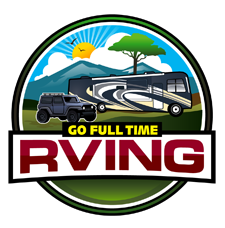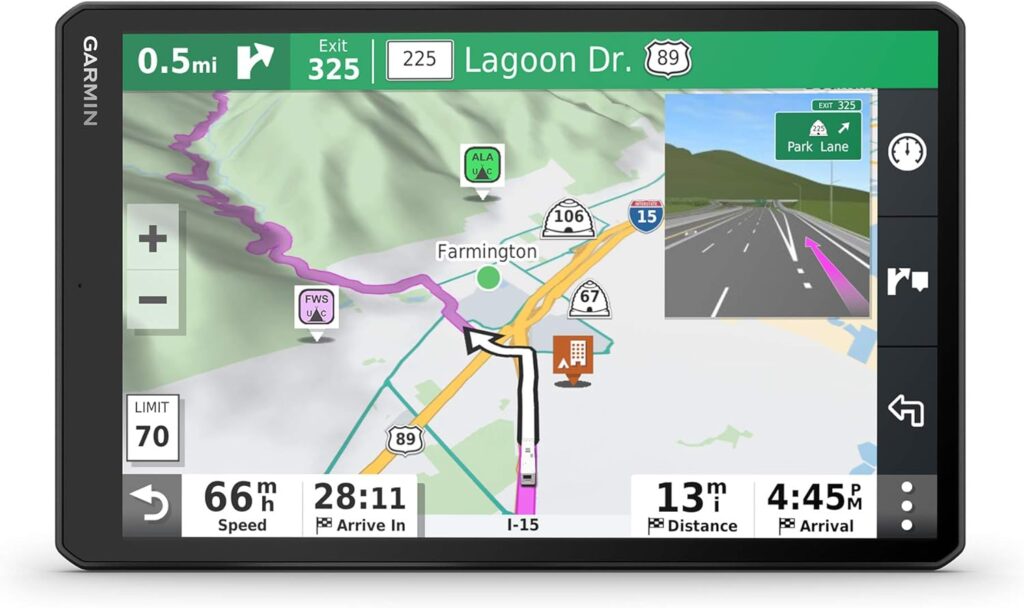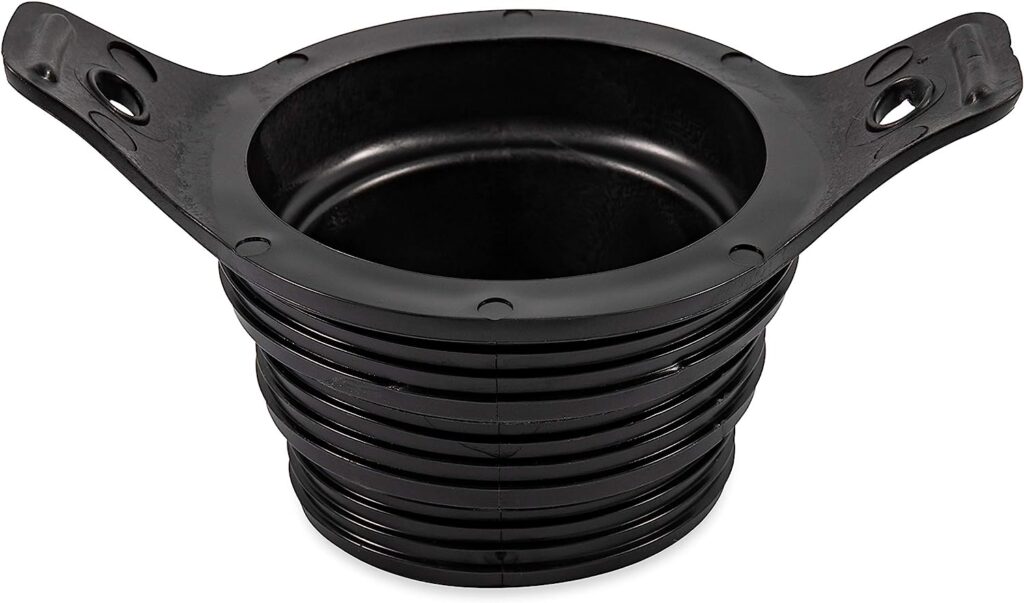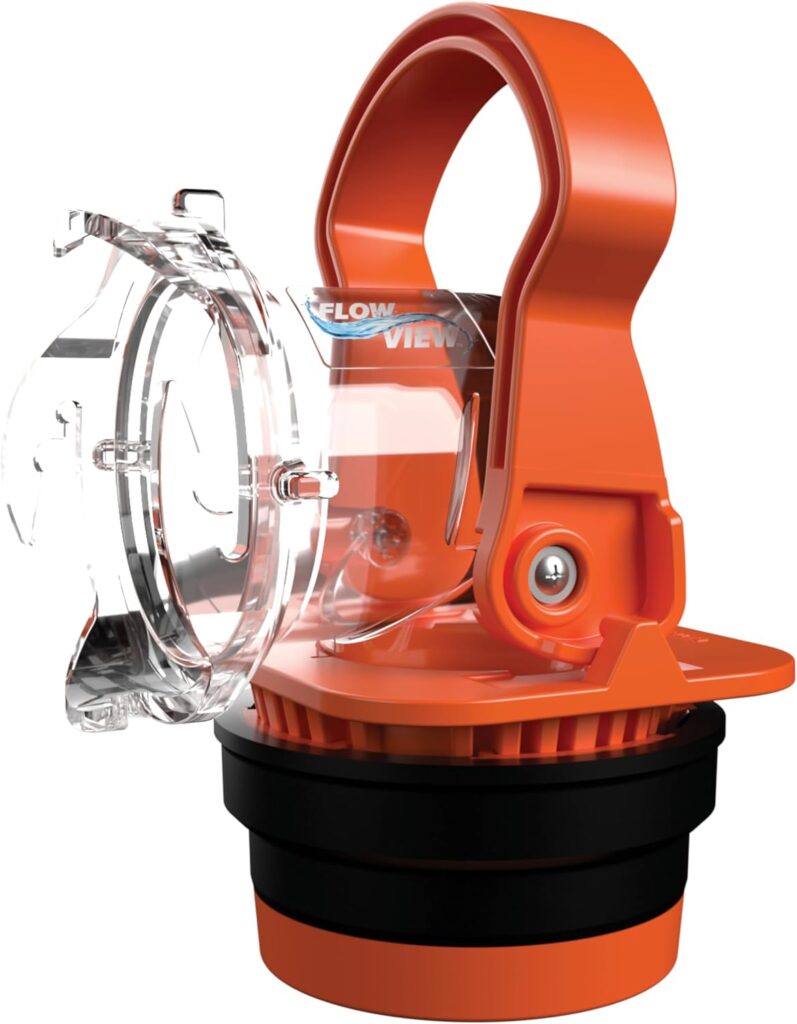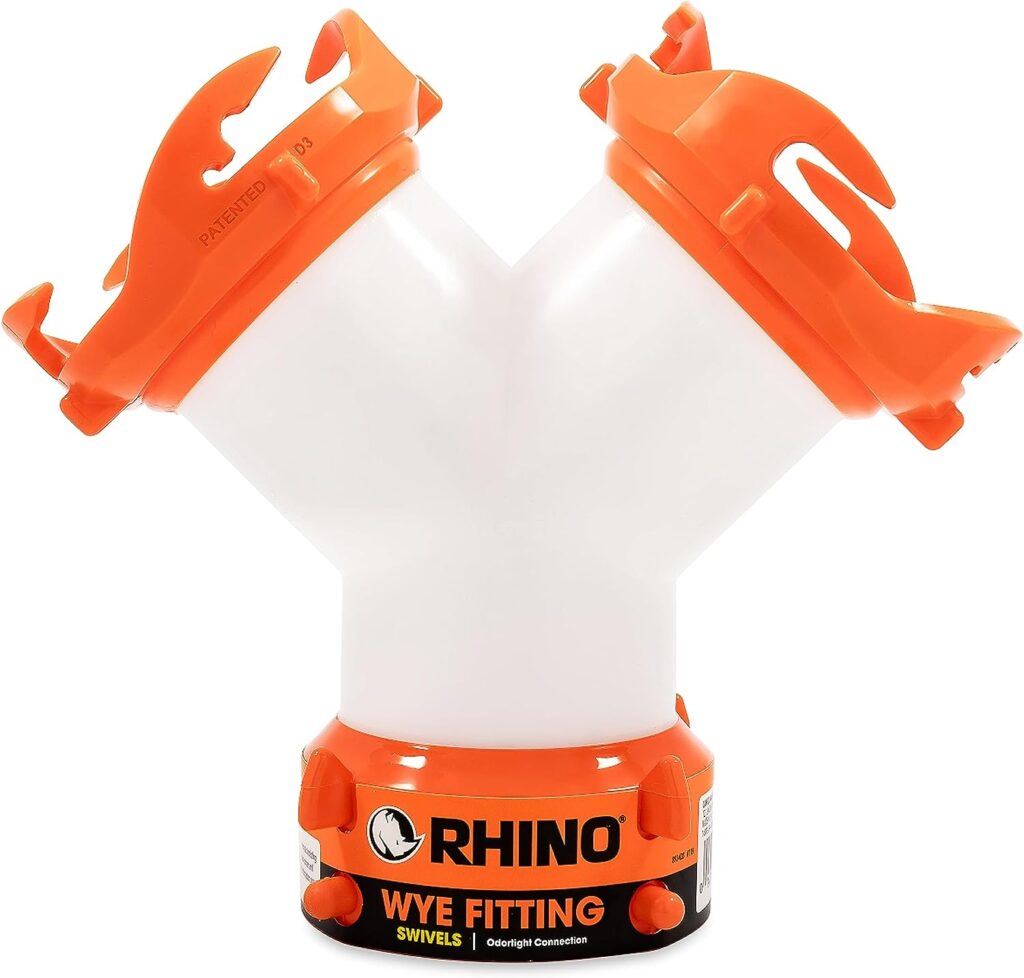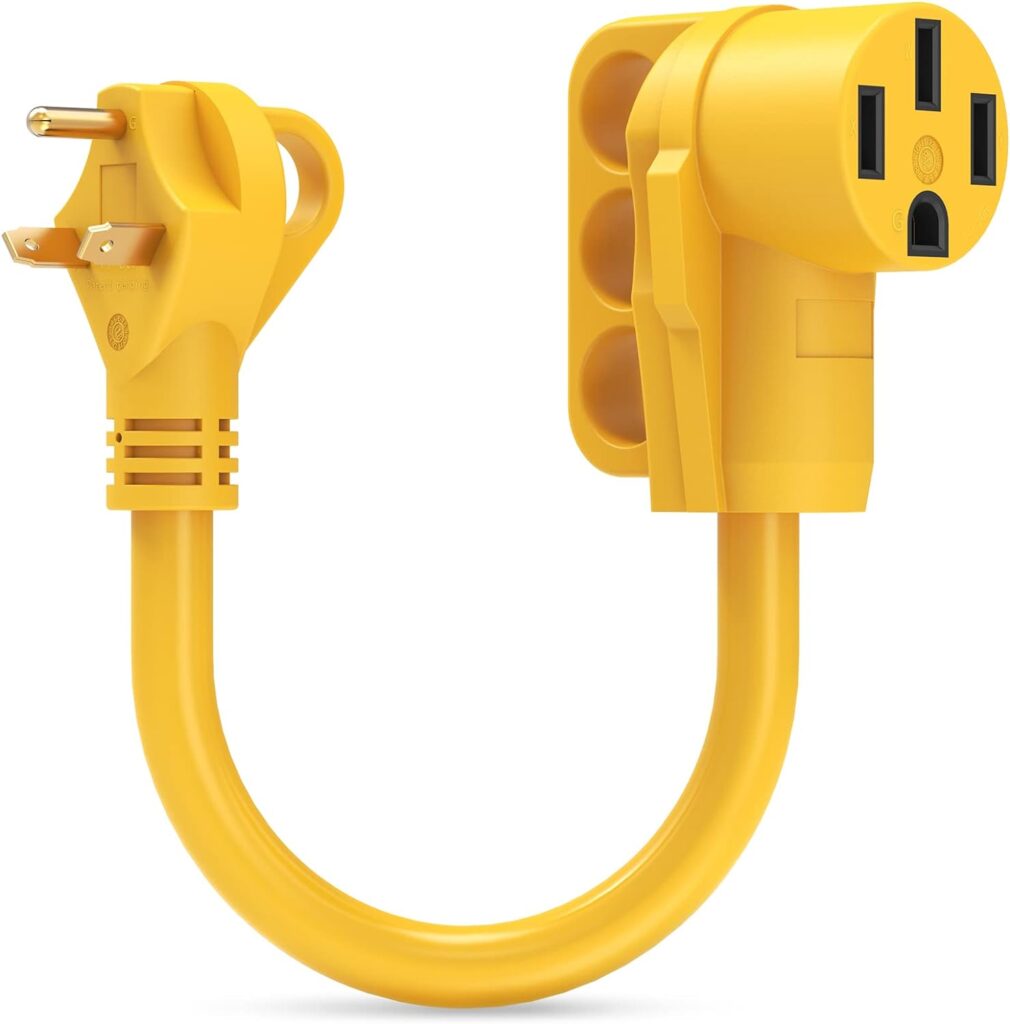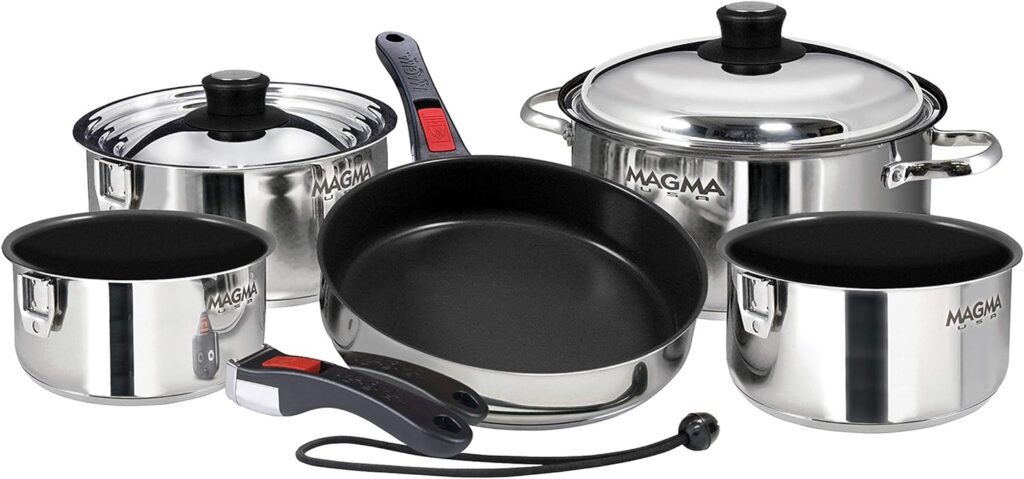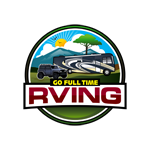This is a listing of items we find useful in full-time RVing, and most of them are items we use on a daily basis.
RVing Items We Use
RV Accessories
Traveling in an RV offers a unique blend of adventure and comfort. However, navigating the roads in a large vehicle comes with its own set of challenges. This is where an RV-specific GPS unit, like the Garmin line of RV GPS, becomes an invaluable tool for travelers.
The Garmin RV 780 we use offers customized routing based on the specific dimensions and weight of your RV. (While this unit is great, Garmin has updated its lineup with newer models that are even better.) This is a crucial feature that most smartphone apps lack. The Garmin RV GPS Units take into account factors like bridge heights, narrow roads, and weight-restricted paths to provide safe and suitable routes for larger vehicles. Smartphone apps, typically designed for standard vehicles, may lead RV drivers into challenging or unsafe situations.

While smartphone navigation apps are a great tool for everyday use, an RV-specific GPS unit like the Garmin RV lineup offers several key advantages for RV travelers. From tailored routing and larger displays to reliable offline functionality and integration with RV systems, these specialized devices are designed to meet the unique challenges of navigating a home on wheels. For those seeking a safe, convenient, and reliable navigation solution on their RV journeys, an RV-specific GPS unit is a worthwhile investment.
We keep a variety of drinking water hoses on hand and choose which one we use based on location, weather, and the length needed.
Recreational vehicles offer the freedom to explore the great outdoors while maintaining the comforts of home. One such comfort is access to clean drinking water. This is where RV drinking water hoses become a crucial component of your RV gear. Unlike standard garden hoses, RV drinking water hoses are specifically designed to ensure that the water you consume is safe, clean, and taste-free.
RV water hoses come in various lengths, typically ranging from 10 to 50 feet. Choose a length that suits your typical camping setup. The standard diameter is 1/2 inch, which is sufficient for most needs, but a 5/8-inch hose can offer a faster flow rate. We’ve used both, and both work fine. Look for hoses that are certified by NSF/ANSI for drinking water safety.
Our Primary hose is a Camco TastePURE 25-foot Premium Drinking Water Hose. This is one of the best hoses we’ve used during our travels.

If you’re a full-time RVer like we are, you will more than likely camp somewhere where the temperatures occasionally get below freezing. In these cases, you need a heated water hose so you can ensure you have water even in freezing conditions. We use the Camco 50-foot Heated Drinking Water Hose.

Besides the two primary hoses above, we also keep on hand a Camco TastePURE 10-Ft Premium Camper/RV Water Hose for very short runs to the motorhome, or if we need to add an extension if the spigot is more than 25′ away.

Use your drinking water hose exclusively for that purpose. Don’t use it for flushing waste tanks or washing your RV to avoid contamination.
A reliable RV drinking water hose is an essential component for any RVer. It ensures that you have access to safe, clean drinking water wherever your adventures may take you. By choosing the right hose and maintaining it properly, you can enjoy the convenience and comfort of fresh water on all your travels.
- Other Hoses
Since you don’t want to use your fresh water hose for any other purpose than your drinking water, you may want to invest in a couple of other hoses.
The first one we would recommend is having a dedicated hose for flushing your black tank. When flushing the black tank, there is a chance of water backing into the hose from the tank. You definitely don’t want that going into your drinking water hose. We use the Camco Rhino 25-ft Clean-Out Camper/RV Black Water Hose. No matter what hose you choose, we recommend having a hose that is a different color from your drinking water hose so as not to get the two mixed up.

Another hose you may want to have on hand is a general-purpose hose for washing your RV or other uses. We found that the Zero-G hoses work great and save space in the storage area. They can also be used as a drinking water hose if you like. Again, just use it for that purpose to avoid cross-contamination.

One essential but often overlooked tool in this regard is the RV water pressure regulator. This simple device can be a game changer for your RV experience.
RV plumbing systems are typically less robust than those in stationary homes. They are designed to be lightweight and flexible, making them sensitive to high water pressure commonly found in many campgrounds. A water pressure regulator ensures that the pressure entering your RV is within a safe range, typically around 40 to 50 psi, thereby preventing potential damage to pipes and appliances.
We’ve gone with a Renator RV Water Pressure Regulator as our regulator of choice. A word of caution, freezing weather will damage the gauge.
RV water pressure regulators are a vital component for any RVer. It protects your vehicle’s water system from the perils of high pressure, ensures a consistent water supply, extends the life of your plumbing, and prevents costly repairs. Simple, affordable, and easy to install, it’s an investment in your RV that you won’t regret. Whether you’re a weekend warrior or a full-time traveler, make sure a water pressure regulator is part of your RV accessories.
Incorporating hose elbows and fittings into your RV’s water system is not just a matter of convenience; it’s a smart way to protect your investment. They ensure a stable, efficient, and reliable water connection, allowing you to focus more on enjoying your journey and less on dealing with water system issues. With their ease of use, durability, and practicality, hose elbows and fittings are indispensable tools for any RVer.
Below are a few of the fittings we keep on hand to customize our water hookup.
A Camco 45-Degree Hose Elbow and a Camco 90-Degree Hose Elbow are the fittings we use the most.
Oftentimes times you need to use multiple water hoses, a Morvat Heavy Duty Brass 2-way Y Splitter comes in handy.
An often overlooked aspect of RV travel is the importance of a reliable water filtration system. Not only does it ensure safe and pleasant-tasting water, but it also protects your health, your vehicle, and the environment. Investing in a quality water filtration system is an investment in the overall quality and safety of your RV adventures.
The most crucial benefit of having a water filtration system in your RV is the assurance of safe drinking water. As you travel, you’re likely to encounter various water sources, each with its own level of purity. A good filtration system can remove contaminants such as bacteria, viruses, sediment, and chemicals, ensuring your water is safe for drinking, cooking, and daily use.
The simplest form of filtration system is just adding a “blue filter” to your incoming water hose. We’ve used the Camco TastePURE Camper/RV Water Filter & Hose Protector for a number of years and find it does a decent job. We recommend changing this filter out monthly.
The RV Water Filter Store South of The Border 3 Stage Water Filtration System is a step up in water filtration and might be something you are interested in for improved water quality.

Clearsource Premier RV Water Filter System is another high-quality and highly rated water filter system you may want to add to your RV water supply.

We love the compact design of the Blu Tech R3, RV Water Filter System. This three-filter system is Compact and Lightweight; The perfect addition to your camping accessories the R3 comes with an ultra-lightweight polycarbonate carbon fiber frame, and its compact 5-inch filters, making Blu Technology the most compact system on the market.

Having a water flow meter for your RV can be quite beneficial for several reasons.
- If you’re traveling or living in an RV, you’re likely using a limited water supply. A water flow meter helps you keep track of how much water you’re using, ensuring you don’t run out unexpectedly.
- A water flow meter can alert you to any unusual increases in water usage, which might indicate a leak. Detecting leaks early can prevent water damage and save on repair costs.
- For those who pay for water usage at RV parks or campsites, a water flow meter can help keep track of consumption to avoid unexpected costs.
We find the P3 P0550 Water Meter to be a handy and accurate tool to have. We use it mostly to know how much water we are using while flushing our black tank.
While handling the grey and black tank waste is not the most glamorous part of RVing, it is essential for a hygienic and enjoyable experience. Investing in a quality sewer hose, understanding its proper use, and regular maintenance will make this task as painless as possible, letting you focus on the joys of life on the road.
One of the first mistakes we made in our Full-Time RVing life was purchasing our first sewer hose. The parts specialist at the dealership from which we purchased our motorhome recommended a Camco RhinoFLEX sewer hose. What we didn’t know at the time was that there are different levels of Camco Rhino hoses. The all-plastic RhinoFLEX hose only lasted about 6 months of full-time use before springing a leak! A leak of sewage! Yuck! It would probably be a great choice for weekend warrior campers, but for full-time RV living, you want something better. And for about $20 more, you can have a much better hose!
The second hose we purchased was the Camco RhinoEXTREME Sewer Hose. This sewer hose has superior abrasion resistance and crush protection. The durable hose won’t crush and utilizes TPE technology, making it resistant to abrasion and pinholes. We’ve used our second set of hoses for over 5 years and just recently had to replace our 15′ Sewer Hose.
You can purchase the hose in a variety of lengths. We’ve found with our RVing lifestyle, the most versatile combination is a 10′ Sewer Hose and a 15′ Sewer Hose. Occasionally, the 20′ Sewer Hose is just not long enough to reach the sewer connection.

Along with the primary sewer hoses, you’ll probably want some accessories that make the whole process better.
We’ve found that having a couple of 2′ Sewer Hoses on board can come in handy when you need just a bit more reach.
If you buy a hose kit, it usually comes with a Clear RV Sewer Hose Elbow. But if you just buy a hose, you may need to purchase one of these also. The clear elbow allows you to see what is getting dumped down the sewer drain and to know when it’s done dumping.

Occasionally you’ll run into a sewer drain that you can’t screw your elbow adapter into. When that happens, you can solve the problem using a Camco 39319 Flexible 3-in-1 Sewer Hose Seal. The other option is to use a Camco 39317 3-in-1 Flexible Sewer Hose Seal with your Clear RV Sewer Hose Elbow. The problem with these is that there is still a potential for them to blow out of the pipe with the pressure of dumping the tanks.
The Camco Rhino RV Sewer Adapter PRO is a game-changer for waste disposal on the road. Giving the benefits of both the Clear RV Sewer Hose Elbow and the Camco 39319 Flexible 3-in-1 Sewer Hose Seal above, this clear, 90° elbow adapter expands to securely fit both 3½″ and 4″ NPT sewer inlets, making hookups quick and hassle-free. Great for Damaged or Threadless Pipes: This essential camping tool simplifies setup by securely handling pipes with damaged or no threads. The transparent design also lets you see when your tanks are fully empty, eliminating guesswork and ensuring a thorough dump every time. Rated 4.4 out of 5 stars by early reviewers, users appreciate how well it handles damaged or threadless park sewer connections and call it a worthwhile addition to their sanitation setup. We just got ours and have had no issues yet.
Sometimes a Wye Sewer Hose Fitting comes in handy if you have multiple tanks you need to run to one sewer drain.
You may want to keep a few spare Camco RV Sewer Hose Storage Caps around. A set comes with your hoses, but if you’re like me, you may leave one lying around someplace and end up losing it when you go to store your hose. You don’t want the hose left open.
An RV sewer hose support is often required by many campgrounds. They offer multiple advantages, including improved waste flow to prevent blockages, enhanced hose protection from ground damage, and increased health and safety by avoiding direct contact with waste. It simplifies the waste disposal process, especially on uneven terrains, and helps reduce odors by ensuring a more complete and quicker emptying of the hose.

The final piece to our sewer hose supplies is a Twist-On Waste Valve. This valve comes in handy when we’re boondocking. Our motorhome has two grey tanks. One tank connects the shower and kitchen sink. The other is connected to the bathroom sinks and the washer. The shower/kitchen sink tank always fills faster. The Valterra Twist-On Waste Valve allows us to tie both tanks together so they both fill equally.
One item we choose not to carry with us, but some people like to take along, is an RV Tote Tank. The primary benefit of an RV Tote Tank is its portability. It allows you to empty your RV’s holding tanks without having to move your entire setup. This is particularly advantageous in campgrounds without direct sewer connections. You can simply wheel the tote tank to a dump station, empty it, and return, all without the hassle of uprooting your RV.
For those who enjoy longer stays in remote areas, a tote tank is a game-changer. It significantly extends the time you can spend off-grid or in a park without sewer hookups. This means more time enjoying nature and less worrying about reaching full tank capacity.

An electrical surge is a sudden spike in voltage significantly above the designated level in a flow of electricity. In the United States, the standard voltage for home and RV outlets is typically 120 volts. When this threshold is exceeded, even briefly, it can lead to serious damage to your RV’s electrical system and connected devices.
Without proper protection, power surges can destroy appliances, electronics, and electrical systems within your RV. The repair costs can be significant, and the inconvenience of dealing with these issues can disrupt your travels.
An RV surge protector is a small investment that can save thousands of dollars in potential damage and ensure your travels remain uninterrupted.
To counter these risks, investing in an RV surge protector is crucial. There are two primary types:
- Basic Surge Protectors: These devices monitor the voltage supplied to your RV and cut off the power when it exceeds safe levels.
- Electrical Management Systems (EMS): More advanced than basic surge protectors, EMS devices offer comprehensive protection against surges, low voltage, and faulty wiring.
The top brands are Progressive Industries and Southwire. You’ll want to choose a surge protector or EMS that is compatible with your RV. It will either be a 30 amp or 50 amp surge protector. You can also choose from plug-in type or hardwired. This isn’t the place to go cheap when deciding on which surge protector to purchase. The key is to ensure your RV and electronics are protected.
For our Class A motorhome we chose a 50 amp plug-in type Surge Guard EMS by Southwire.
Like carrying an extra length of water and sewer hose, there may come times when you need a little more cord to reach the power pedestal. Having a 15′-25′ extension cord should be enough to get you by in most situations. Over the past five years of full-time RVing, we’ve had to use our extension cord three times if I recall. This is another item you’ll need either a 30 amp extension cord or a 50 amp extension cord, depending on your RV.
We went with a Camco Power Grip 15-foot 50-amp Extension Cord for our motorhome.
Occasionally, you’ll run into campgrounds that only have 30-amp service. Or you may be moochdocking at a friend’s house and can only plug into a 15-amp plug. If you run into this situation, you need a Dogbone Adapter to go from the 30-amp or 15-amp plug to your 50-amp RV.
The step-up into the vehicle can be quite high, especially for children, elderly individuals, or those with mobility issues. An accessory step reduces the height of the step, making entry and exit from the RV safer and more accessible. It also provides a stable and flat surface, which is particularly useful in uneven terrains or in wet conditions, reducing the risk of slips and falls. Moreover, these steps are typically foldable and lightweight, making them easy to store when not in use.

When you park your RV on uneven ground, it can lead to a multitude of issues. An unevenly parked RV can place undue stress on the vehicle’s frame, leading to potential long-term damage. RV leveling blocks are designed to solve this problem efficiently. They are placed under the RV’s wheels or jacks to level the vehicle, ensuring a stable and horizontal position. Easy to use and highly portable, these blocks are a must-have for ensuring a worry-free and enjoyable RV experience, no matter where you park.
We have two sets of the 2×2 Camco Fasten Leveling Blocks and one set of the 2×4 Camco Fasten Leveling Blocks.
Kitchen Items
The Magma Products A10-366-2-IND Gourmet Nesting Stainless Steel Induction Cookware Set we use is ideal for those with limited kitchen space due to its unique nesting design. Made for induction cooking, it ensures even heat distribution and includes various pots and pans with lids. The set is durable, easy to clean, and adds a modern touch to any kitchen, making it versatile for various cooking methods.
We love cooking Chinese food, so in addition to the Magma Cookware Set, we got the Magma Induction Saute/Omelette Pan/Wok.

A nesting bowl set is highly beneficial in an RV due to its space efficiency, versatility for multiple uses, durability suitable for travel, and easy-to-clean nature, making it a practical choice for those looking to save space and time while on the road. We really like the Joseph Joseph products and went with their Nesting Bowl Set.
RVers commonly use Corelle dinnerware due to its durability, lightweight construction, and space-saving design, making it ideal for limited storage space and potential movement within RVs. Corelle dishes are also microwave and dishwasher-safe, allowing for easy food preparation and cleaning on the go. Their break-resistant quality is advantageous for RVers who encounter rough terrain during their travels. Additionally, Corelle offers a range of aesthetic options, and its affordability makes it an attractive choice for those seeking quality kitchenware without a hefty price tag. We went with the Country Cottage pattern.

We went with the Joseph Joseph Nest Plastic Food Storage Containers. They are highly practical due to their space-saving nesting design, ideal for kitchens with limited space. Made from durable, BPA-free plastic, they are safe for use in dishwashers, microwaves, and freezers. The containers feature airtight lids for freshness, making them suitable for a variety of food storage needs. Their colorful lids also assist in the easy identification of contents, enhancing kitchen organization.

Whether you’re dining under the stars or in the comfort of your RV, having the right silverware makes mealtime on the road a breeze. A setting for 4 is usually enough unless you have a larger family that travels with you. We had a large set in our sticks and bricks home that we broke down to a 4-person set.
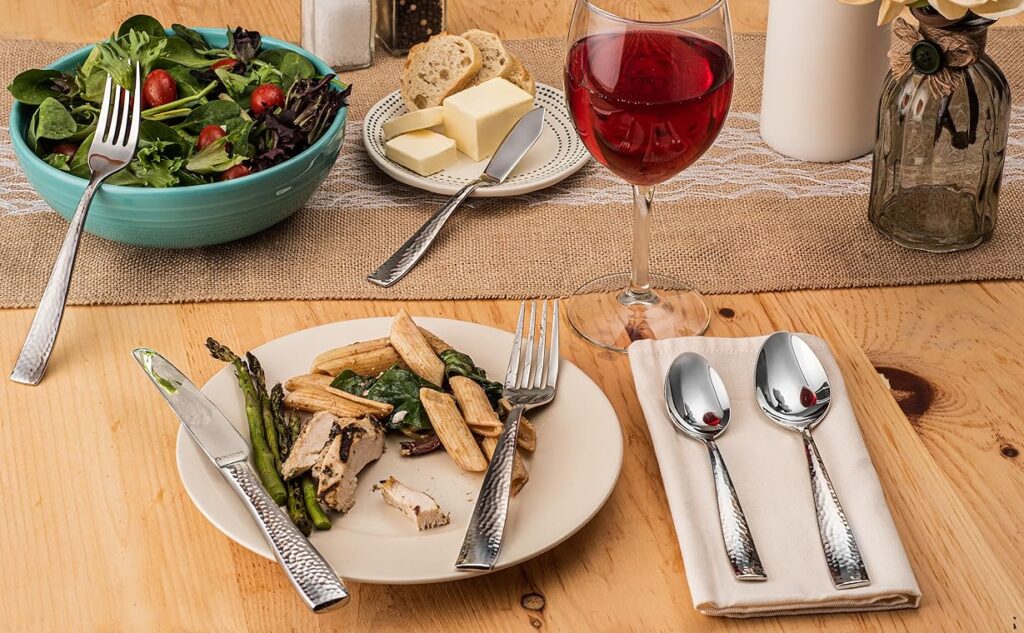
Finding the perfect RV utensil organizer can be surprisingly challenging. The primary reason lies in the unique requirements of RV living – space is at a premium, and every item must be as compact and multifunctional as possible. Moreover, the diverse range of RV interior layouts and sizes means that one-size-fits-all solutions are rare. This variety in RV designs leads to a limited market for such specialized products, as manufacturers often focus on more universally fitting kitchen accessories that cater to traditional homes. We went with another Joseph Joseph product to fit our motorhome’s 7 1/2″ wide kitchen drawers. The Compact Cutlery Drawer Organizer works perfectly in our drawer and leaves a little room for other items in the drawer.
In addition to the Utensil Organizer for our silverware, we purchased another countertop organizer for the larger serving utensils.
We went with another Joseph Joseph space-saving design for our knife set. The Joseph Joseph 10303 DoorStore Knives Elevate Set features high-quality, stainless steel knives with a unique Elevate technology that prevents the blades from touching countertops, enhancing hygiene and reducing mess. The set includes color-coded knives for easy identification and comes with a space-efficient storage solution that attaches to cabinet doors, ideal for kitchens with limited space. This set combines functionality, style, and practicality, making it a valuable addition to any modern kitchen.
As you can see by now, we like the Joseph Joseph space-saving items. Joseph Joseph Pop Chopping Mats are the perfect addition to any RV kitchen, offering a range of benefits for on-the-go cooking. These flexible and color-coded mats are not only space-saving but also hygienic, making meal preparation a breeze in limited RV space. With these mats, RVers can enjoy the convenience of efficient, compact, and sanitary food preparation while on their adventurous journeys.
An item we didn’t know we needed until we started Gate Guarding was a portable Ice Maker. Our motorhome has a residential refrigerator with an ice maker, but when Gate Guarding, we don’t have potable water, so we turn it off. Countertop ice makers are compact and don’t take up much space in the RV’s kitchen area. This is important in the limited space of an RV, where every inch of counter space is valuable. We can fill it with water from our 5-gallon drinking water jugs. It eliminates the need to constantly buy bags of ice or rely on limited ice cube trays. Having an ice maker onboard allows you to be more self-sufficient and less reliant on external sources.
Overall, an electric pressure cooker is considered one of the best options for cooking in an RV due to its versatility, space-saving design, energy efficiency, and time-saving capabilities. Its ability to perform multiple cooking functions in a single appliance makes it a practical choice for the limited kitchen space in an RV. Additionally, its low power consumption is ideal for conserving energy when relying on RV power sources. The quick cooking times provided by an electric pressure cooker further enhance its appeal, allowing travelers to prepare a variety of meals efficiently and enjoy their journey without compromising on home-cooked dishes. While many people love the Instant models, we went with the Crock Pot version for the non-stick pot.
Bedroom Items
Buying a mattress online was one of the strangest things for me. I’m used to going to a store and checking out what the mattress feels like, lying down on it, and making sure it seems like something that is going to be comfortable. We just didn’t know where to go to find an RV mattress that we could do all that with. I guess we could have gone to a Denver Mattress Store and checked out some, I don’t know. But we weren’t happy with our original Denver Mattress, only lasting a little over 2 years, so we looked at other options.
The first thing we looked for was something that had good reviews from other RVers. We checked lots of review sites, but even with them, mattress comfort is such a personal choice that it is hard to determine what will be right for you. Everything we looked at, we kept hearing good things about the Montana Hybrid Mattress from Wilderness Mattress.
We decided to purchase the Montana Hybrid RV Mattress in Plush.
RV mattresses are different from standard mattresses primarily due to the unique constraints and requirements of recreational vehicles. They are custom-sized to fit specific spaces, often thinner and lighter to save weight, and designed for ease of installation and use in the limited interior of an RV. With that, you need to order specialized sheets. Our motorhome has an RV King mattress, and we use Silentnight RV King (72X80) Navy Blue Stripe 100% Egyptian Cotton Sateen Sheet Sets on it.
RV Parts
Having a Tire Pressure Monitoring System (TPMS) in your RV is crucial as it enhances safety by alerting you to potential tire problems, extends the lifespan of your tires by ensuring they’re properly inflated, improves fuel efficiency, and offers peace of mind, knowing that one less thing needs your constant attention. It’s a convenient tool that makes RV life safer and more enjoyable, allowing you to focus on the adventures ahead. We’ve found the systems by TST to work perfectly for our motorhome and toad.
For our motorhome, we use the TST 507 with 6 flow-through sensors. The TST 507 gives a real-time display of pressure and temperature on a 3.5″ widescreen color monitor. The monitor gives visual, audible, and textual alerts when conditions are at unsafe levels.

For our Ford Bronco toad, we use cap sensors from TST. You can use flow-through sensors if you have steel valve stems. Our Bronco has rubber valve stems, so cap sensors are recommended.
Motorhome windshield wipers are crucial for safety, especially due to the large windshield size of RVs. They are longer than standard vehicle wipers and nearly impossible to find at a big box store or an auto parts store. Ours our 32″ long. Proper fit, quality, and regular maintenance are essential to ensure clear visibility and safe travels. We found that Trico Flex 32″ wiper blades work well on our motorhome.

One thing you don’t want to go out on your RV is the power steps. Troubleshooting the steps and replacing parts is a fairly simple project to DIY. Both times we’ve had issues with our steps, it ended up being the motor. There are many different motors on the market, ours takes the Kwikee/Lippert 606061, but we found them to be overpriced to our liking. Several aftermarket brand motors are reasonably priced enough to keep a spare on hand. We went with the MOCW 676061 1101428 Motor Replacement Kit and have had good luck with them.

Flat Towing Items
Tools
Maintenance Supplies
Campsite Items
Miscellaneous Items
Storage Items
Dog Supplies
Gate Guarding Supplies
Conclusion
We hope you find these items as useful as we do. Please let us know if we can answer any questions on any of these products.
